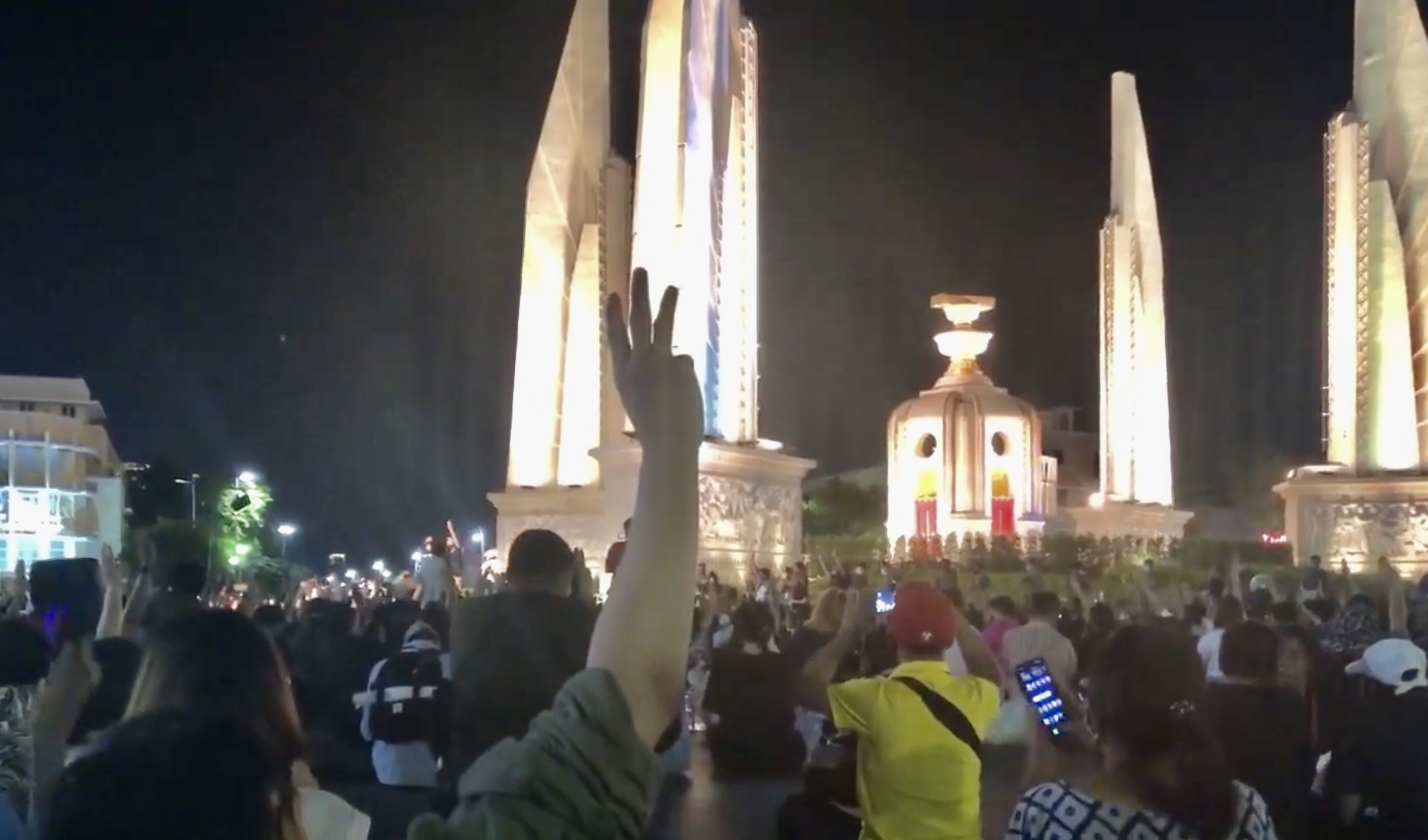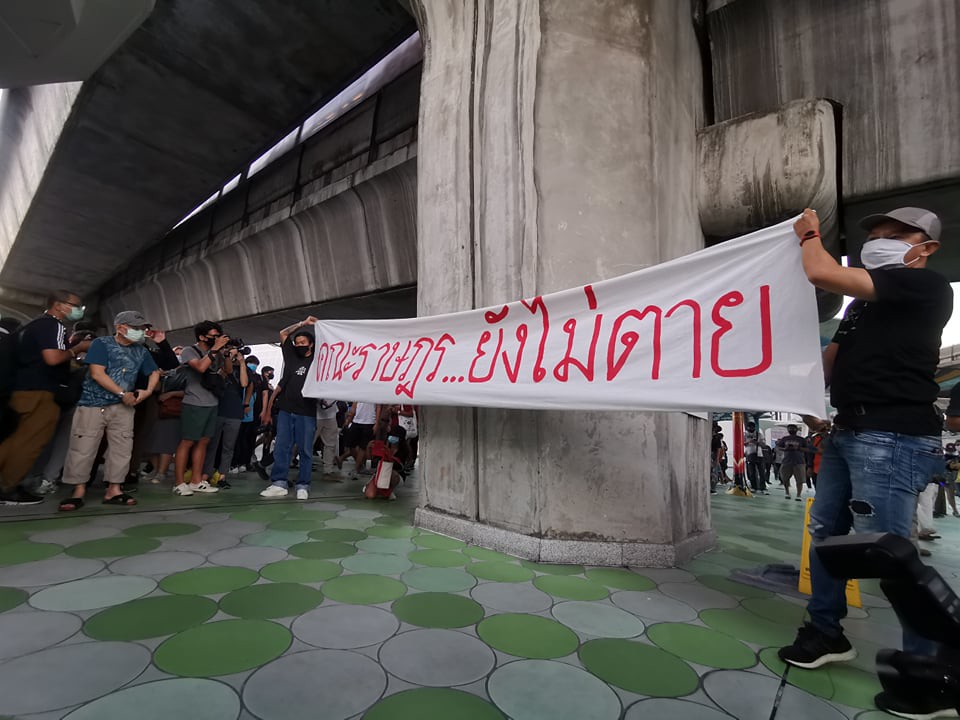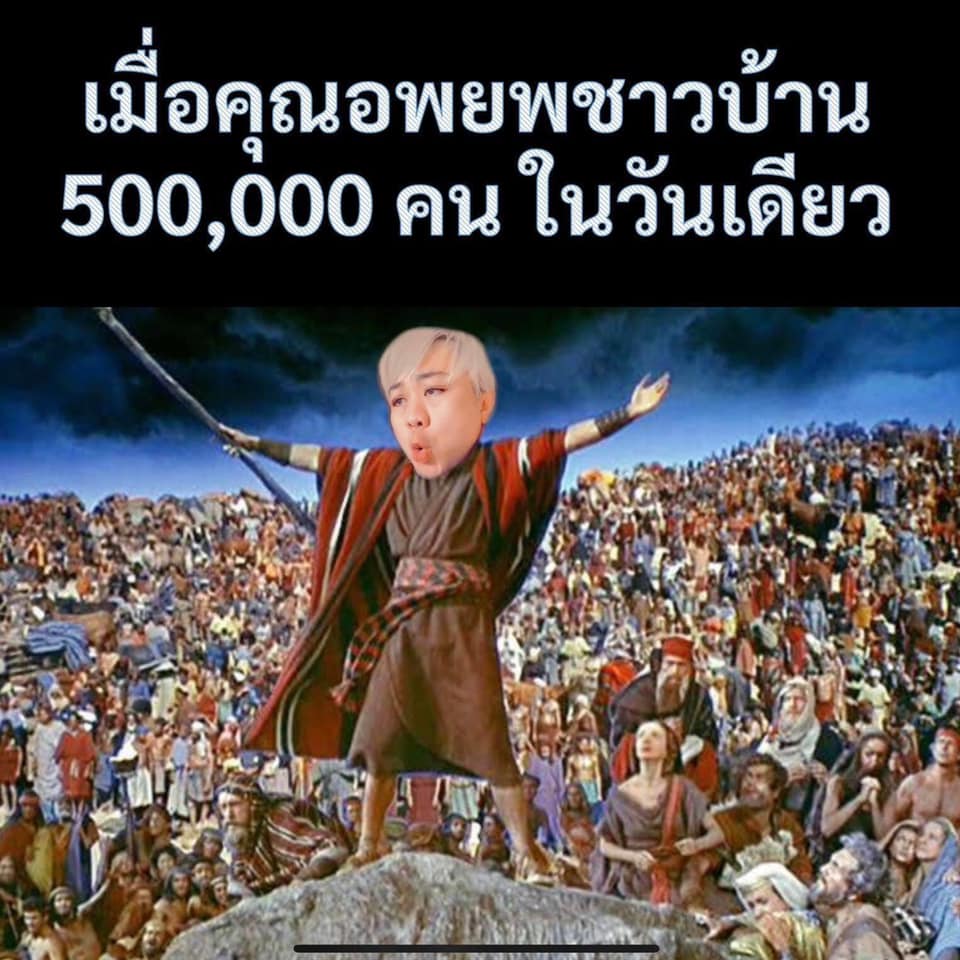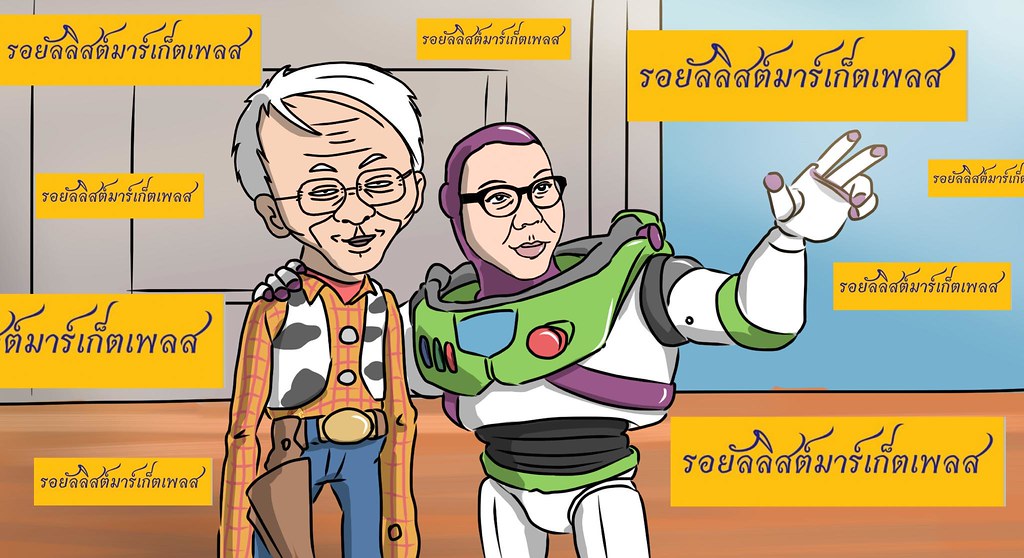To understand the history of dissent in Thailand, and the culture of the current protests, I spoke with Thammachart “Tommy” Kri-aksorn of the Prachatai Journal. It’s a fascinating conversation about Thailand and why so many are protesting for change.
Asia Art Tours: For readers who are unfamiliar, can you discuss the recent protests in Thailand? Who are the protesters? What are they demanding? And how is the government responding?
Tommy: Most of the information about the recent protests can be found at Prachatai’s All you need to know about Thai protests. From July to mid-August, there have been more than 100 protests in Thailand. I have lost count, but now there should have been more than 150 already. They have gathered to demand a better future.
The protesters are from all walks of life. What’s unprecedented is that high school students have also joined the protests. I think most of the recent protests were led by university students. They are from middle class families whose status has been quite respectable in Thailand. To win the struggle, they have tried to make alliances with trade unions, LGBT and women’s rights groups, and some factions in the red shirt movement who sympathize with their cause.

Caption: Photo from recent protests in Thailand around Bangkok’s Democracy Monument. Source: Wikipedia
According to some observers, we are seeing an organic political movement. So, their demands are quite diverse including no abuse in schools, equal marriage for all, no monopolies in the alcohol industry, a welfare state, military reform, and peace in the Southern provinces of Thailand. However, they have something in common: they attribute their problems to authoritarian politics. Thus, they join together to demand constitutional amendments, freedom of expression, and also monarchy reform.
The government’s responses are not sincere. While they claim that they are listening to the protesters, NGOs report hundreds of human rights violations by the Thai authorities. Recently, one report said that a kindergarten girl was visited by the Thai authorities for showing a three-finger symbol against the government. A kindergarten girl! Even so, Gen Prayut Chan-o-cha has realized that “the current is strong” so threats against citizens are still minimal.
Looking into the deep structure, I think behind this is a struggle over ‘common sense.’ While the current protesters believe in freedom, the rule of law, democracy, human rights, and change, the establishment values obedience, legalism, hierarchy, and tradition. In the past decade, the establishment has been trying hard to make democratic and human rights institutions (including parliament, the Election Commission, the courts, the Ombudsman and the National Human Rights Commission) compatible with their traditional values as seen in their efforts after the 2006 and 2014 military coups.
In contrast, the protesters are waging a struggle to return the democratic and human rights institutions to their original values while also trying to transform traditional institutions (like schools, families, the military, and the monarchy) to fit better within a framework of liberal democratic society. In a sense, we are seeing politics in a Gramscian sense where two historical coalitions compete to co-opt social institutions in their own hegemonic setting.
 Caption: On 16 August, Thais held the largest demonstration in 6 years on Ratchadamnoen Avenue. A conservative estimate shows that more than 10,000 protesters joined.
Caption: On 16 August, Thais held the largest demonstration in 6 years on Ratchadamnoen Avenue. A conservative estimate shows that more than 10,000 protesters joined.
AAT: How would we compare and contrast the current protesters to past protesters in Thailand?
Tommy: It depends on which period you want to compare them with and for what purpose. Most Thai political observers make comparisons with the past to anticipate what will happen next. The optimists think that they might be able to overthrow the junta like in 1973 and 1992, but the pessimists are worried that if they keep on pushing their luck, they may get killed like in 1976 and 2010.
I personally do not think that history will repeat itself. The outcome will be somewhat different from the past. More relevant are contemporary examples from other countries. Recent protests have showed us that even though they are very horizontal and creative, they are still not powerful enough to bring about regime change. So, the outcome might be different from Serbia in 2000.
A large-scale crackdown is unlikely too because most of the protests are still in the form of flash mobs. The government does not want one because they are afraid that if they do anything ugly it will be live on CNN. The Thai economy also depends a lot on the global market these days. It is not that they completely rule out the use of violence. It is rather that they would use it as a really last resort.
Since we left out the cases of complete victory or failure, I think two scenarios are worth anticipating: Hong Kong or Mexico. Hong Kong exemplifies the success of ‘smart repression’ by the Chinese authorities while resistance continues. In the 2010s Mexico, even though the Yosoy132 movement was not successful in preventing Enrique Peña Nieto’s presidency, they were able to transform common sense so completely that Nieto left office with an approval rating of only 18%.
One difference is that in Mexico, the new common sense led to a change of national leadership and transformation of social institutions into something more liberal and democratic. While I sympathize with Hong Kong in that they are fighting in a very asymmetric conflict, I wish that Thailand could be like 2010s Mexico in terms of its historical trajectory.
AAT: Is solidarity being built with the sacrifices and historical memory of those who protested in the past?
Tommy: I do not think there are any significant sacrifices. Thai protesters are well connected with memories of previous struggles. Many historical movements have been reinvigorated in the recent protests including the 1932 Democratic Revolution, the 1970s Student Federation of Thailand, the 1990s Assembly of the Poor, and the 2010s Red Shirt movement. If anything, they are sharpened to be even more true to their democratic spirit.
To appeal to the red shirt protesters who fought in 2000s and 2010s, one student leader read out From Soil to the Sky at a recent protest. It is a famous speech by Nattawut Saikua, a red-shirt leader who remains in prison. The student leader complimented the red-shirt movement as the strongest and the most stigmatized movement of the people so far. As a result, a faction of red-shirt protesters have taken part in recent demonstrations despite warnings from some capitulating red-shirt leaders that talking about monarchy reform only leads to losses.
On Twitter, we also see that “let it end in our generation” is one of the protesters’ mottoes. They know problems remain and they want earlier protesters to join and end them once and for all. On another occasion, the hashtag “Free History” topped Twitter in Thailand as netizens discussed events which the Thai authorities do not want people to know about. In short, history is being rediscovered at the same time as the solidarity is being built.
 Caption: On 24 June, protesters raised a sign “People’s Party is still alive.” People’s Party is a group of civilians and military which overthrew absolute monarchy in 1932.
Caption: On 24 June, protesters raised a sign “People’s Party is still alive.” People’s Party is a group of civilians and military which overthrew absolute monarchy in 1932.
AAT: Turning to recent history, the online movement #MILKTEAALLIANCE connected Thailand’s democratic struggle to similar struggles in countries like Hong Kong, Malaysia, Indonesia and Taiwan. How have Thailand’s protesters been inspired by struggles for democracy in these countries? And are activists in these countries supporting Thailand’s struggle now?
Tommy: I think Thai protesters have learned many good things from these countries. Obviously, I could be under criticism or a travel ban when I refer to Hong Kong and Taiwan as countries, but I don’t think I will give a damn.
Thai protesters have learned some of their tactics from Hong Kong’s protests. For example, Thai students borrowed from Hong Kong an idea of using blank sheets of paper for their protests. When the Thai authorities referred to Hong Kong as a bad example because their protests led to chaos and economic recession, Thais are compelled to protest even more.
As far as I know, Thai protesters often praise Taiwan’s digital ministry while at the same time they highlight how incompetent the Thai counterpart is. Now and then there is news about Taiwan’s digital minister announcing genius innovations which improve people’s lives. In contrast, the Thai digital ministry’s only mission these days is to impose censorship and combat allegedly anti-monarchy speeches.
I think what connects Thai protesters with Taiwan and Hong Kong is their concern about China’s growing dominance in Asia. When the Thai government pursued pro-China policies, Thai democratic opposition often said in a satirical tone that Thailand has been a part of China since ancient times. Due to the language barrier, I don’t know whether or how much they support us. But we are inspired by their democratic innovations.
With regard to Indonesia, I am sorry I do not have any information at all. But when Malaysia’s Najib Razak got a 12-year jail term for 1MDB, there was an exposé that the Thai government also involved in the scandal. The fact that no one in Thailand took responsibility for this is one of the many things which have enraged Thai protesters. With or without the milk tea alliance, I think people will still fight for democracy in their own nation. But it is good that they now have a shared identity and possibilities of mutual support.
AAT: You’ve written some powerful articles about slang in Thailand’s protests. For the recent protests, could you tell us why the Thai word ชั่ย’ (chai), is being featured? And what other words are protesters using to express themselves and their demands?
Tommy: I think the origin of the word ชั่ย (chai) is pretty amazing. But like other Thai political slang, no one reports about it or gives it a proper context and analysis. It is a common practice for media outlets in Thailand to have English teaching content, but almost none wants to teach Thai to foreigners in a serious manner, especially when it comes to Thai political slang.
When I started the project, I began to see why no one wants to do it. Explaining Thai political slang is pretty difficult, especially if you want it to be rich in context. I have a bachelor in political science myself. I also got help from my sub-editor who has a specialty in linguistics. Despite the backup, only a few of my experiments saw the light of day.
ชั่ย’ (chai) was popular several months ago. Some still use it today but it is no longer trending. Some political slang stays for a long time, but the protest culture is changing fast. Recently, Royalist Marketplace is their favourite word. It is the name of a Facebook group which has more than 1 million members who have honest discussions about the monarchy.
Royalist Marketplace has been an influential factor in calling for monarchy reform as people repeatedly displayed Royalist Marketplace signs in many protests. Yesterday (25 August) access to the group was restricted by Facebook upon request of the Thai government. Facebook said it is preparing to take legal action because the request like this is a severe violation of human rights. Meanwhile, a new Facebook group was founded and now more than 750,000 have joined. According to a meme, this is like the Great Exodus.
 Caption: A meme of Pavin Chachavalpongpun opening Royalist Marketplace – Talad Luang, a Facebook group of monarchy reformists which register 800,000 members in several days. The new Facebook group was a response to access restriction of the former group in Thailand upon request by the Thai government.
Caption: A meme of Pavin Chachavalpongpun opening Royalist Marketplace – Talad Luang, a Facebook group of monarchy reformists which register 800,000 members in several days. The new Facebook group was a response to access restriction of the former group in Thailand upon request by the Thai government.
AAT: For past protests could you tell us about how the words ควายแดง (red buffalo) and ‘อีโง่’ (stupid bitch) were used to criticize protesters and the movements they supported? And how did these words represent larger divisions within Thai society that still haven’t been resolved?
Tommy: Like I said earlier, the current political crisis is a struggle over common sense. It is a contention between two sets of values. Even though both political camps speak Thai, it is as if they speak different languages. ควายแดง (red buffalo) is one of the slang terms which are still in common usage. But the two political camps use it differently. While a red shirt may call himself a proud ควายแดง, pro-government supporters use it to insult their political opponents. The way it was then remains true today.
Similarly, some pro-junta supporters still dedicate the term ‘อีโง่’ (stupid bitch) for Yingluck Shinawatra as they reminisce about their political victory of 2014. But at the same time more people have been using it against them and no longer in a misogynist fashion. People of any gender can be called ‘อีโง่’ (stupid bitch) by anti-government protesters if they post pro-junta comments on Facebook. Language is one of many warfronts in a hegemonic struggle. It is not a contest between usage and prohibition, but contention over how it is used.
Asia Art Tours: Turning to one of your articles on how Japanese Pop Culture is being used in recent protests, what have protesters said about why they are using symbols like Hamtaro, One Piece & Naruto to represent dissent against the current military junta? And have these actions built solidarity with supporters in Japan who want to help Thailand’s protesters?
Tommy: The use of these symbols came out of their intuition as they grew up with this pop culture. They have used not only Japanese pop culture, but also Western pop culture. For example, the three finger sign is so common in Thailand that people almost forgot that the origin was in the Hunger Games. Recently, student protesters also held a Harry Potter-theme protest to call for monarchy reform as they talked about “the one who must not be named.” Due to the language barrier, I do not know about Japanese feedback. But I am pretty certain that Thai protesters have made pretty good international headlines in the past two months.
AAT: I know artists like Khai Maew and musicians like Rap Against Dictatorship have been very important in voicing dissent against the elite of Thailand. How have Thailand’s artists/celebrities inspired or supported the current protests? And what do they risk by doing so?
Tommy: For artists like Kai Meaw and RAD, their art is inherently political. I can’t say how much I appreciate them, especially Kai Meaw whose works I have used as cover pictures of my many reports. Their art has been critical of authoritarianism as it should be, but this is not something we always have.
I can still remember the time when Thailand was such a sad place, where all rap was about nationalism, Buddhism, encouraging exercises, and doing good deeds for the monarchy, where all political cartoons were about why a woman prime minister is worse than a whore. Thank god we have rebellious artists, or else my country will be so hopeless.
Back to the question. There are other artists and celebrities whose art is not inherently political. Many of them joined the protests, but they do not face threats from the Thai authorities as harsh as artists whose work is inherently political. After a recent protest, RAD’s Hokky was arrested for sedition while The Bottom Blues’ Ammy was not.
I think both kinds of artists have their own way of encouraging the protesters. While the political artists have played a role in constructing anti-government narratives, non-political artists joining the protests mean that the protesters’ messages are reaching a wider political spectrum. Besides, being a pro-government celebrity is not risk-free. Boycotts by anti-government protesters have been quite effective. They have already kicked a pro-junta moderator out of a TV program while others wait trembling.
 Caption: Political cartoon of Somsak Jeamteerasakul and Pavin Chachavalpongpun discussing Royalist Marketplace signs which are everywhere in the protests recently. Source: Kai Meaw X
Caption: Political cartoon of Somsak Jeamteerasakul and Pavin Chachavalpongpun discussing Royalist Marketplace signs which are everywhere in the protests recently. Source: Kai Meaw X
AAT: Lastly, for those who want to help or learn more about Thailand’s protests, what kinds of support do protesters say they need? And are protesters in Thailand trying to support other movements globally (BLM, Belarus, Palestine, Lebanon, HK, etc.)?
Tommy: Join protests held by Thais overseas if there is one in your country. Spread information about Thai protesters to raise awareness. Fight for freedom of the press, social justice, and democracy in your own country because one day they may help Thailand too. Even if your government can’t help directly, just being a good example for us is good enough. For example, how can people have faith in democracy when Trump is the leader of the free world?
International media helps Thai protesters a lot. It makes a military crackdown more difficult here because it reminds the Thai government that the world is watching. Sometimes, they are even better than the Thai media. For example, without a CNN report, the Red Bull’s scion Vorayuth Yoovidhya may have already got away with his crime. And it was the Sydney Morning Herald that exposed the drug conviction of the Deputy Minister of Agriculture. So support the free press.
Meanwhile, protesters in Thailand have to be more conscious about other countries too. I don’t think Thai protesters are helping other countries much recently. There was a protest in support of BLM in Thailand, but many Thais need also be aware of their own racism. Thai protesters can also do more to support Belarus, Palestine, Lebanon, and Hong Kong.
